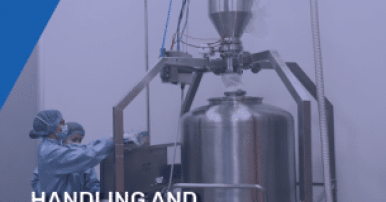Why Is Power Important?
The power available for use in your facility plays a significant role in determining the type of industrial vacuum system that will best suit your needs. Unfortunately, this isn’t a “plug and play” (or “plug and vacuum”) situation. If you try to run a vacuum that’s too powerful for your facility, you risk overloading the electrical system. But run a vacuum that’s too weak, and you won’t be able to pick up the product you’re attempting to collect. Below, we’ll break down the key differences between single-phase and three-phase industrial vacuums, as well as the advantages of electric versus pneumatic systems.
Why Do I Need to Consider Power When Purchasing an Industrial Vacuum?
You don’t need to be an electrician or engineer to understand the vital role power plays in vacuum usage!
This is why the topic matters so much:
- Power has to be available in order for your industrial vacuum system to run. From there, the type of power that you have in your facility tells you plenty about what kind of system you’ll need. More on that in a bit.
- In addition to being available, power needs to be accessible in every area that requires vacuuming. How far do you need to reach, and is that distance feasible?
- Finally, what are you trying to do with this vacuum system? The answer to that question will tell you what kind of performance you’ll need, and how much power is required to achieve it.
Ultimately, your facility’s available power is a limiting factor when it comes to the performance of an industrial vacuum system. Let’s take a look at how you can make sure you’re choosing a vacuum that fits your environment while meeting your needs.
Single-Phase vs. Three-Phase Industrial Vacuums
Before we dive into the different types of power, let’s touch on a few key terms:
- Watt (W): a unit of power that measures how much energy is produced or used per second. You’ll often see Watts used to specify the input power of an industrial vacuum system motor.
- Volt (V): a unit of measurement used to describe the force of an electric current.
- Ampere (amp or A): a measure of the amount of flow through a circuit over a period. This is typically used to describe how much electricity is consumed by an industrial vacuum cleaner system.
- Horsepower (HP): a unit of power commonly used with engines. While you’ll see this unit in vacuum system specifications, we’re more concerned with the total amp draw.
Single Phase
Single-phase power is widely available in the U.S. Our country uses 115V single phase, which means that the maximum amp draw is 20 amps. That’s about 2.25kW, or 3 HP, coming out of your average household outlet.
The drawback with single-phase power, however, is that it does limit performance. In Europe, outlets use 230V single phase, which doubles what we can do here. But we all have to work with what we have, so be sure to find out the type of power available in your facility before starting to evaluate your options.
Single-phase industrial vacuum systems are ideal for noncontinuous or intermittent use. They’re sturdy, yet compact, allowing you to tackle both dust and liquids. If you’re planning to keep your system running at all times, however, you’ll need a three-phase system.
Three Phase
To get to 230V in the U.S., we switch to three-phase power. Why? Because three-phase power allows us to run less voltage through each wire, dropping heat transfer and accommodating higher loads. If you need a system that can be run continuously or used for heavy-duty tasks, choose a three-phase industrial vacuum system.
At Delfin, we recommend choosing a system that functions at around 8 to 10 HP—anything above that has to go to 460V. For 230V, the cutoff is 30 amps or 7.5kW. If you try to operate a machine that requires more power, your wires will get very hot, and you’ll run into some pretty staggering problems—including electrical failures, fires, and even explosions.
Airflow and Pressure
With the differences between single-phase and three-phase power in mind, let’s turn to the factors that can help us make the decision between the two: airflow and pressure.
CFM vs. Water Lift
Airflow is also described as CFM, or cubic feet per minute. This is a measure of how much air a vacuum motor can actually move. Water lift, on the other hand, measures pressure, or the lifting/suction force of the vacuum system. The term mentions water because it’s traditionally calculated by measuring how high (in inches) a vacuum can lift water in a standard column.
These key qualities are determined by:
- How much product you’re picking up
- The bulk density of the product
- How many users you’ll have on the vacuum system at once
- How far away you’ll need to travel
- How much resistance is in the line
- Hose diameter
- Filter blockage
- Filter resistance
All of those factors combined will tell us the required airflow and pressure that you’ll need in an industrial vacuum system. And those two figures, in turn, allow us to determine how many kilowatts (or how much horsepower) are needed to efficiently achieve that goal.
It’s important to note that a higher horsepower doesn’t necessarily mean that you’re getting more airflow and pressure; CFM and water lift are actually inversely related! You could have a 5-horsepower unit that creates more airflow—or more pressure. This is accomplished by using the same motor with a different blower. One machine is designed to capture light products with speed, while the other will pick up very heavy products.
Compressed Air
There’s one more option to consider—one that doesn’t involve single-phase or three-phase industrial vacuums. Let’s talk about compressed air vacuums.
This kind of vacuum system is ideal for use in places where electricity isn’t available or can’t be used. Instead of using electricity to generate suction, compressed air vacuums use a Venturi system. Essentially, they take positive pressured air and force it from a large chamber into a smaller area. This speeds the air up, because you’re pushing the same volume through a smaller space. The air compresses and is chambered off, creating an empty space behind it that needs to be filled—in other words, a powerful vacuum.
Electric vs. Pneumatic
Most industrial facilities have both single and three-phase power available, but that’s not enough—you also need to make sure it’s accessible in the locations where you intend to use your industrial vacuum system. If the use of electricity isn’t possible or advisable in a certain location, you’ll want to opt for a system powered by compressed air. Here are the pros and cons of each option.
Electric Vacuums
Electricity is typically widely available in industrial facilities. As a result, electric vacuums are a common choice. Not only are they more energy-efficient than air-powered systems, but they also have a wider range of performance capabilities.
Sounds ideal, doesn’t it? However, electric vacuums must also comply with federal electric codes. If you choose a system that isn’t appropriate for your facility, your company could face a hefty fine. Electric industrial vacuums also have a high number of moving parts and, accordingly, a limited lifespan.
Air-Powered Vacuums
Pneumatic vacuums have no moving parts and no ignition sources, making them ideal for use in hazardous environments. But there’s also a high energy cost for running a compressor, and most pneumatic vacuums also require a certain pressure and volume of air to function properly. But in the right environment, compressed air vacuums provide excellent pressure with significant flow—perfect for picking up heavy products.
When it comes to pneumatic vacuum systems, your first question should always be, is there enough air available for this machine to run? Your next question should center on how efficient this kind of system might be in your facility. Fortunately, there are a number of excellent machines on the market.
Delfin, for example, offers a multiple-jet venturi system that’s incredibly energy efficient when compared to similar vacuums.
What Should I Look for in an Industrial Vacuum System?
Now that you understand why it’s so important to consider your facility’s power, you can move on to the other key considerations that go into the purchase of an industrial vacuum system.
Be sure to ask yourself the following:
- Am I working with a combustible dust? If the answer is yes, you’ll need to look into explosion-proof vacuum systems.
- Do I need a vacuum designed for continuous or intermittent use? Determine whether you’ll be running your vacuum system constantly or only when needed. This information affects the type of motor your system will need.
- What am I collecting? This question sounds simple, but you may need to get more descriptive than usual. Is the product dry or wet? Sticky or abrasive? Fully understanding the product you’re picking up will help you determine the right filtration and other key features and tools.
- How much product am I collecting? You’ll need an industrial vacuum with enough capacity to accommodate the product.
- How many users will be on the system simultaneously? The number of users affects both the airflow and pressure your industrial vacuum system will need.
- Am I looking for a portable industrial vacuum or a fixed system with piping? What makes the most sense for the layout of your facility?
Find the Right Fit with Delfin’s Industrial Vacuum Systems
Delfin proudly supplies vacuums for any voltage worldwide. We also offer NFPA-compliant and ATEX-certified compressed air systems for use in hazardous environments.
If you’re having difficulty identifying the correct industrial vacuum system for your facility, give us a call. We know it’s not easy to sort through endless specifications and predict your own needs! Our knowledgeable sales team is ready and able to equip you with a system that will suit your available power supply and your performance goals.




